Number of Sprinkler Heads You Can Put On a Line and Head-To-Head Coverage
How many sprinkler heads can you put on an irrigation line? Read more to know more.
One of the common questions we received in the irrigation industry is, “how many heads can you put on a line?”. The fact of the matter is it’s a trick question; we don’t have enough information. To understand the answer to the question we must first have a basic understanding of the concepts of hydraulics. Hydraulics is the science of water in motion. There are three key concepts that we need to have a basic understanding to answer the question about how many sprinkler heads you can put on a line. First, we need to know how much water and pressure we have available. Secondly, we need to understand how much water and pressure a sprinkler head needs. And finally, we need to be able to manage the pressure loss through various components of an irrigation system to make sure that last head has enough water and pressure to make it work properly.
So how do we know how much water and pressure we have available at the source?
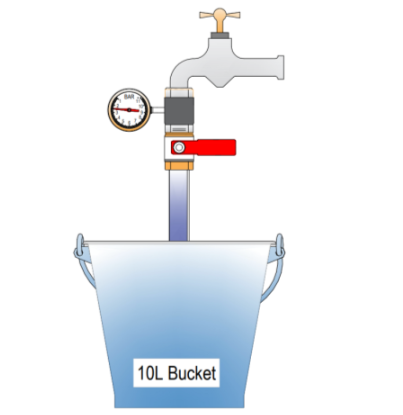
Fig.1: Measurement of flow and pressure
The easiest way to tell how much water you have available is to perform a simple test with a bucket. Time how long it takes to fill the bucket, perform the simple math, and you will know the flow rate you have available. To check the pressure, use a simple pressure gauge at either the backflow prevention device or the hose bib and that will tell you how much pressure you have available at the source. Once the amount of water and pressure at the source is known, the next piece of information that we need to know to answer our question is how much water and pressure the sprinkler head needs to make it work properly. That kind of information is found in the manufacturer’s catalogs.
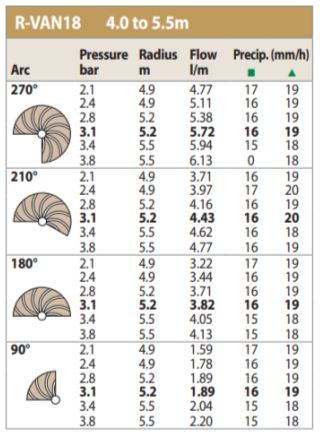
Fig.2: Pressure & flow rate of the sprinkler from manufacture catalog (Reference from rainbird)
The last thing that we need to know is how to manage pressure loss as water moves through the various components of an irrigation system pressure is lost due to friction.
A properly designed irrigation system will lose about 1-2Bar pressure. Those numbers can be broken down as follows.
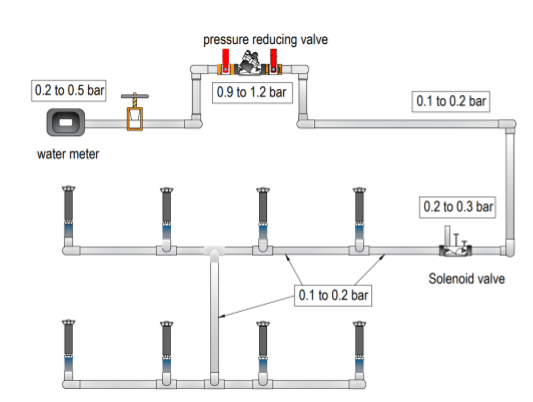
Fig.3: Pressure loss through various components of an irrigation system.
0.2 – 0.5 bar loss through the water meter, 0.9 to 1.2 bar loss if you are using a reduced pressure assembly backflow. 0.2 to 0.3 bar loss through the valve and 0.1 to 0.2 bar loss through the lateral piping, The loss through the PVC pipe is just a rule of thumb.
To determine the specific amount of pressure loss as well as water flow through a given size pipe refer to the pipe sizing charts in the back of the manufacture catalog. Now you can see, the question of how many heads you can put on a line does not have a simple answer.
Head-to-Head coverage
This is very important in the design of the sprinkler system and how to lay out the heads and this relates to getting an even precipitation rate across the landscape or across a particular zone. What the head-to-head spacing actually meant the definition of this is that the spray from one rotor goes out and touches the next head in line and this is true for a rotor or sprays. The spray from that head touches its neighbor so that we have an interlocking grid (see fig.4).
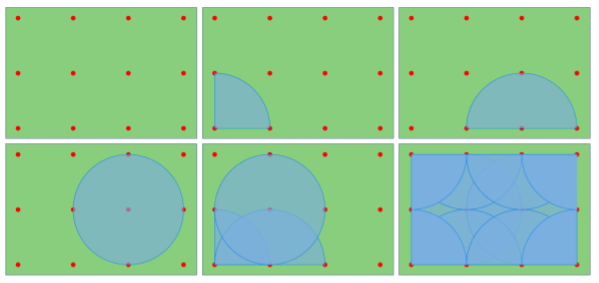
Fig 4. Head-to-Head Coverage
So we have a 90 degree pattern here now we will see a 180 degree pattern you see that its reaching out and touching its neighbors to the side and the one in front of it and then you see a 360 degree pattern here that’s reaching out and touching all of its neighbors and in this square pattern you can see that it touches all of its neighbors to the north and south and left and right there when we put all these together at least in the corner we are seeing the 90, 180 and 360 all overlapping like the fig4, but let’s look at the entire zone if all these heads were running and they all had their patterns going so what we see here is four 90s, what six 180 degree pattern heads and a couple of 360 in the middle and that’s when they are all reaching out and touching each other we have an interlocking pattern and if we select the right heads and we compensate for the difference in the 90 to 180 degree and 360 degree pattern this is how we are going to get the most even coverage in our landscape.


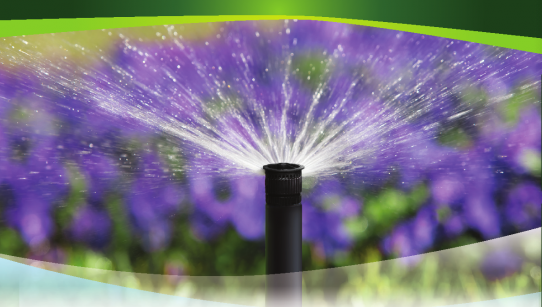


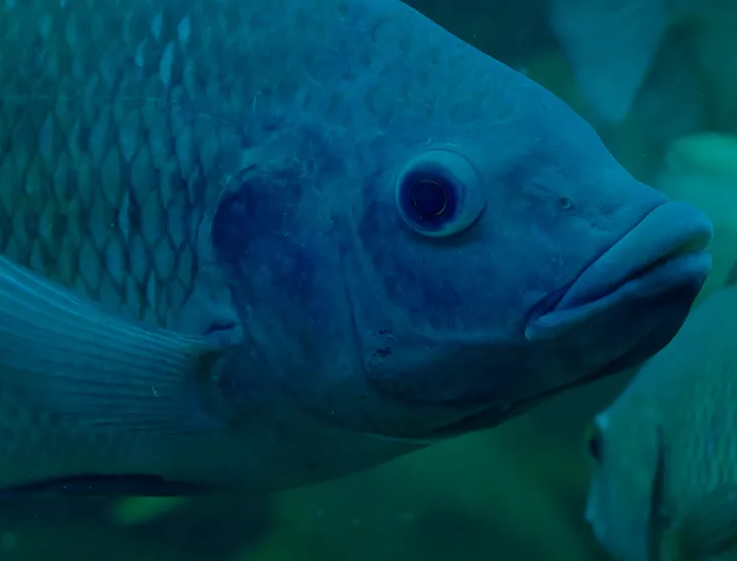

.png)




No comments yet